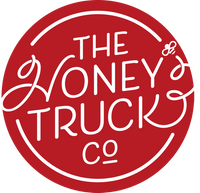Best Native Flowers for Bees in Spring: Creating a Pollinator-Friendly Garden
If you want to support honeybees and other pollinators this spring, planting native flowers is one of the best ways to provide them with a reliable food source. Native plants are well-adapted to local climates, require less maintenance, and help sustain healthy bee populations. If you’re in the Southeastern United States, consider adding these bee-friendly native plants to your garden:
1. Eastern Redbud (Cercis canadensis)
One of the earliest blooming trees in the Southeast, the Eastern Redbud produces clusters of small pink flowers that attract honeybees and native pollinators. These blossoms appear before the tree’s leaves emerge, offering an early nectar source when food is scarce.
2. Coral Honeysuckle (Lonicera sempervirens)
Unlike invasive Japanese honeysuckle, this native vine produces bright red tubular flowers rich in nectar. Coral honeysuckle is a favorite of bees, hummingbirds, and butterflies, and it blooms throughout the warmer months, providing a long-lasting food source.
3. Southern Blueberry (Vaccinium spp.)
Blueberry plants, including the rabbiteye (Vaccinium ashei) and highbush (Vaccinium corymbosum), are not only great for gardeners but also essential for pollinators. Their small, bell-shaped flowers appear in early spring, giving bees an abundant nectar source.
4. Willow (Salix spp.)
Native willows, such as black willow (Salix nigra), are some of the first plants to provide pollen and nectar in spring. Bees rely on willows as an early food source before other flowers begin blooming.
5. Purple Coneflower (Echinacea purpurea)
While it blooms from late spring into summer, purple coneflower is an essential nectar source for honeybees, bumblebees, and butterflies. It thrives in a variety of soil types and is drought-tolerant, making it a great addition to Southeastern gardens.
6. Spiderwort (Tradescantia ohiensis)
This resilient wildflower produces small, three-petaled blue or purple flowers that open in the morning and close by the afternoon. Bees love spiderwort for its steady pollen supply throughout the spring season.
7. Golden Alexander (Zizia aurea)
A lesser-known but excellent pollinator plant, Golden Alexander blooms in early spring with clusters of small yellow flowers. It attracts a wide range of bees and serves as an important food source before summer wildflowers emerge.
8. Eastern Beebalm (Monarda bradburiana)
Unlike its more common relative (Monarda fistulosa), Eastern beebalm thrives in the Southeast and is a bee magnet. Its lavender-pink flowers provide both nectar and pollen, making it a valuable addition to any pollinator garden.
9. Black-Eyed Susan (Rudbeckia hirta)
Blooming in late spring and early summer, black-eyed Susan is a hardy native wildflower that attracts honeybees, butterflies, and other pollinators. Its bright yellow petals and dark center make it a garden favorite.
10. Wild Indigo (Baptisia australis)
This deep-rooted perennial blooms in mid to late spring, producing tall spikes of blue flowers that honeybees love. Wild indigo is drought-tolerant and provides essential early-season nectar.
Support Bees. Buy Honey.® with Native Spring Honey
As bees forage from these native plants, they produce honey with distinct regional flavors. If you want to taste the essence of Southeastern wildflowers, try a locally sourced honey like:
🍯 Gallberry Honey – A smooth, mild honey produced from the gallberry plant, native to the coastal Southeast. Perfect for drizzling over toast or sweetening tea. Shop Now
🍯 Orange Blossom Honey – One of the rarest and most prized honeys, sourced from the blossoms of the white tupelo tree found in Florida and Georgia. It has a buttery texture and never crystallizes. Shop Now
By planting these native flowers, you’re not only creating a beautiful garden but also providing honeybees with essential food sources. Every bloom makes a difference in supporting local pollinators and the delicious honey they produce!




